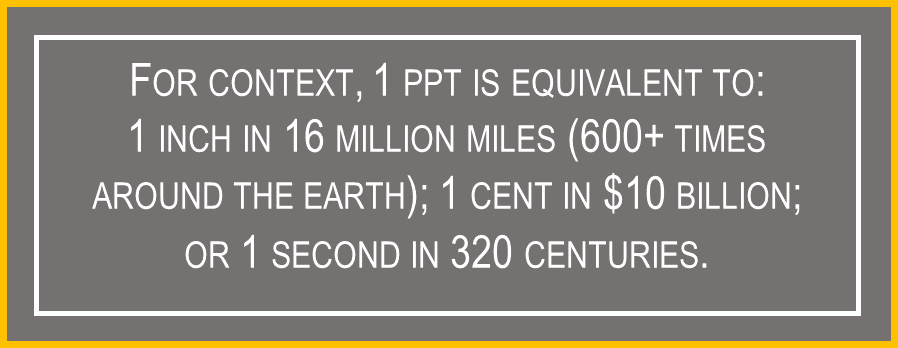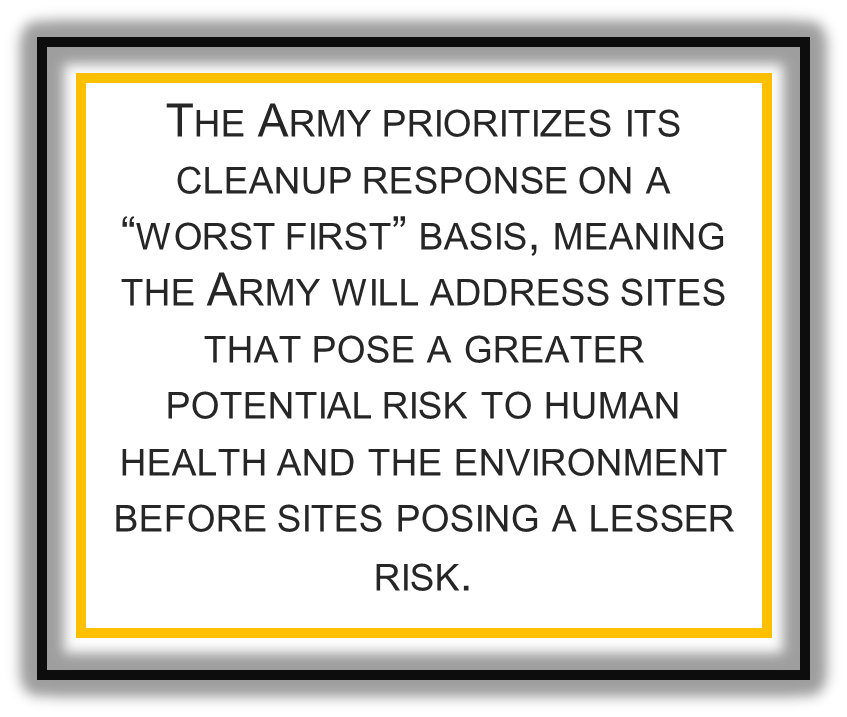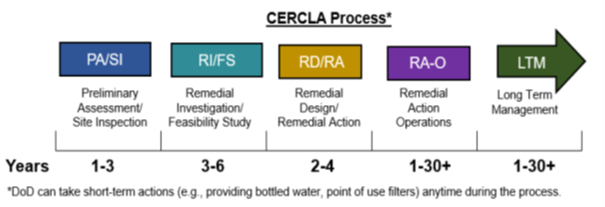
The Army continues to regularly test on-installation drinking water systems and coordinates with purveyors of drinking water to Army installations to ensure PFOS/PFOA levels do not exceed the EPA health advisory levels, or properly promulgated state safe drinking water standards, as a result of past Army activities. The Safe Drinking Water Act (SOWA) is a federal law designed to protect the quality of drinking water supplied to the American public. In 2016, the EPA issued SOWA lifetime HA levels for PFOS/PFOA in drinking water of 70 parts per trillion (ppt). While not an enforceable regulatory standard, a lifetime health advisory represents a concentration in drinking water that is not expected to produce adverse health effects if the water is consumed over an entire lifetime. Sampling of off-installation drinking water supplies is addressed under the cleanup program.

The Army follows the federal cleanup law known as the Comprehensive Environmental Response, Compensation, and Liability Act (CERCLA) of 1980 (also known as “Superfund”), and other long-standing EPA regulations in its cleanup program, including to address PFAS. CERCLA is a complex, multi-phase process that provides a consistent, science-based approach across the nation for cleanup. The Army follows the process to investigate release and assess the appropriate cleanup actions based on risk.


In 2017, the Army began investigating areas with known or suspected releases of PFAS to the environment under the CERCLA framework, including sampling for PFAS in soil, sediment and groundwater. There are no PFAS thresholds or health advisory limits established for sediment, soil, or groundwater as there are for drinking water. In the absence of regulatory direction, the Army has proactively been investigating for PFAS beyond drinking water to better understand potential impacts to the community and environment.
During the Preliminary Assessment (PA), the Army reviews existing information and may conduct site visits to identify locations where Army activities may have caused a PFOS/PFOA release. The next step in the CERCLA process is to perform a Site Inspection (SI) on locations identified during the PA to confirm whether a PFOS/PFOA release occurred. Once the Army has information from the PA/SI, it can make informed decisions on which sites need to move to the next phase (i.e., Remedial Investigation (Rl)/Feasibility Study (FS)). During the RI, the Army collects detailed information through field investigations to characterize site conditions, including the nature and extent of the PFOS/PFOA; assess actual and potential exposure pathways; and evaluate risks to human health. If PFOS/PFOA results in an unacceptable risk to human health and the environment based on EPA’s risk assessment policies, the Army will conduct an FS to evaluate cleanup alternatives and work with regulators to select a permanent solution that is protective of human health and the environment.
RESOURCES FOR ADDITIONAL INFORMATION
Army and DoD PFAS Policy and Guidance
Active Army, Army Reserve, Base Realignment and Closure (BRAC), and non-BRAC excess
https://aec.army.mil/index.php/PFAS
Army National Guard
https://www.nationalguard.mil/Environmental/
Department of Defense Per- and Polyfluoroalkyl Substances (PFAS)
https://www.defense.gov/Explore/Spotlight/pfas/
